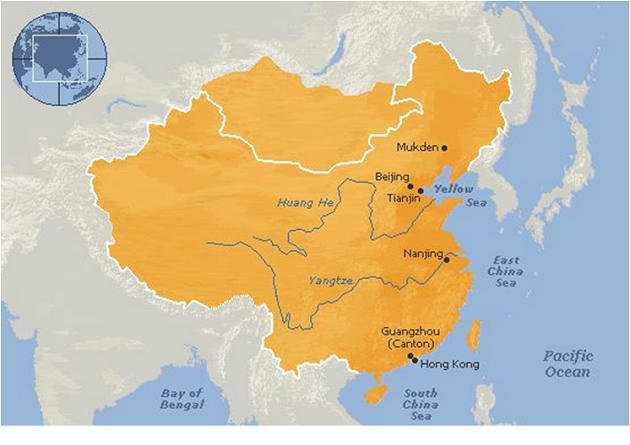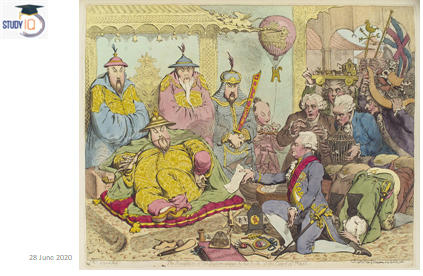Table of Contents


The Century of Humiliation
- ~Hundred years of national humiliation for China
- The period of intervention and subjugation of the Chinese Empire by Western powers, Russia and Japan in between 1839 and 1949.
Imperial China
- For more than 2000 years China was ruled by imperial dynasties
- Leader in innovations and new technology like paper, gunpowder etc.
- In 17th century , Qing dynasty came to power.


The British offer to open trade
- ‘’Our Celestial Empire possesses all things in prolific abundance and lacks no product within its borders. There is therefore no need to import the manufactures of outside barbarians in exchange for our own produce.’’
- Qianlong Emperor, to King George III of Great Britain, 1792
The Canton System
- The Canton System (1757–1842) served as a means for China to control trade with the West within its own country by focusing all trade on the southern port of Canton (now Guangzhou).
- Cohong – group of local Chinese authorised to deal with foreigners
The Opium trade
- British wanted TEA from China
- Did not have anything to sell back to China
- Paying in silver was draining the finances.
- Solution = Opium from India
- Millions of Chinese were addicted
- Opium was banned by the Chinese ruler many times but illegal trade took place.
The 1st Opium war 1839-42
- The Beginning of Modern Chinese History
- 1839 – Chinese official seizure of opium stocks at Canton.
- The British Navy defeated the Chinese using technologically superior ships and weapons.
- Rude shock to Imperial China – Spectacular defeat of an outdated Chinese navy/army
Treaty of Nanking 1842
- Hong Kong Island ceded to Britain
- Establishment of five treaty ports (Shanghai, Canton,etc) for legal Opium trade
- Cohong monopoly removed
- Heavy war reparations (21 million) to UK
A string of defeats followed
- Second Opium War (1856–1860) and the sacking of the Old Summer Palaceby British and French forces.
- The Sino-French War (1884–1885)
- Defeat in the First Sino-Japanese War (1894–1895) by Japan
The Unequal treaties
- Following military defeats, China was forced to make various concessions of sovereignty
- Pay large amounts of reparations
- Open up ports for trade
- Foreign “spheres of influence”
- Leased or ceded territories –
- Outer Manchuria and parts of Outer Northwest to the Russian Empire,
- Jiaozhou Bay to Germany,
- Hong Kong to Great Britain,
- Zhanjiang to France,
- Taiwan and Dalian to Japan



Boxer Rebellion 1899-1901
- Rural Chinese from Northern regions (around Peking) rose up in rebellion against the foreign interventions and Christian missionaries.
- ‘Boxers’
- They sought to restore Qing power.
- An Eight-Nation Alliance suppressed the Boxer uprising.

Aftermath of Boxer uprising
- Execution of government officials who had supported the Boxers
- Provisions for foreign troops to be stationed in Beijing
- 450 million teals of silver as war indemnity – approximately $10 billion at 2018 silver prices and more than the government’s annual tax revenue
Post Boxer Rebellion
- European influence limited
- Japanese start to dominate
- 1911 Revolution
- Sun Yat sen
- Chiang kai Shek
- Mao Zedong
Chinese nationalists restore ‘some’ pride
- The new nationalist government of KMT declared to the Great Powers that China had been exploited for decades under unequal treaties, and that the time for such treaties was over, demanding they renegotiate all of them on equal terms.
The Civil War 1927-49

KMT/Nationalist (Nationalist army) vs. CPC/Communists (Red Army)

Japanese occupation
- Japan invaded Manchuria in 1931 and occupied it till 1945
- Another large scale invasion in 1937 – 2nd Sino-Japanese War
- Horrific atrocities committed by Japan on China’s civil population
The ‘End’ of Humiliation
- 1945 – Chiang Kai-shek declared the end of the Century of Humiliation in the aftermath of World War II
- Japanese defeat , China’s place among the Big Four in the victorious Allies in 1945
- 1949 – Mao declared the end to humiliation with the establishment of the People’s Republic of China
Reasons for the century of Humiliation
- No Industrial revolution
- An ‘Inwards culture’ – philosophy, administration , bureaucracy
- Chinese did not believe in exploration
- Maritime power was not developed, Although the army did manage to suppress a long list of rebellions
- ‘Closed’ market economy
- Long list of weak rulers.
Latest Burning Issues | Free PDF

























 WhatsApp
WhatsApp